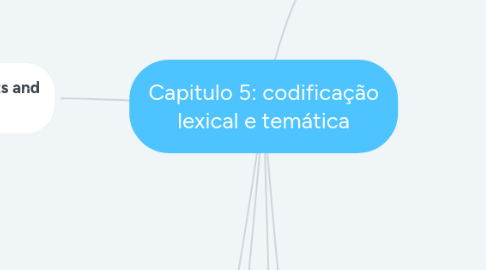
1. Working with Experts and Expertise
1.1. Apprenticeship
1.1.1. Skill
1.1.2. Craft
1.1.3. Competence
1.1.4. Knowledge seekers
1.1.5. Masters
1.2. Knowledge
1.2.1. Information repositories
1.2.1.1. Replicated
1.2.1.2. Codified
1.2.2. Accessible
1.2.3. True expertise
1.2.4. Storytelling
1.2.5. Descriptions
1.3. This is the expertise paradox: the more the expert is needed, the less is usually understood about the expertise.
1.4. Challenges
1.4.1. Knowledge is changing at a rapid pace
1.4.2. Nature of work is around new
1.4.3. Untested ideas
1.4.4. Experts can validate new ideas
1.4.5. False expert
1.4.5.1. Rigor of your certification
1.4.5.2. Selection criteria matter
1.4.5.3. “False positives”
1.4.6. Peer-to-peer collaboration
1.4.6.1. Sharing of expertise
1.4.6.2. Coaches
1.5. Managing Expertise
1.5.1. Reduce the Workload
1.5.2. Use the Right Incentives
1.5.3. Rotate Your Experts
1.5.4. Manage the Demand
1.5.5. Publish Expertise as It Becomes More Stable and Repeatable
1.5.6. Point to Where the Information Can Be Found
1.5.7. Use Different Knowledge Capture Techniques
1.5.8. Bring in Your Trainers
1.6. Opportunities for Learning and E-Learning
1.6.1. Learning community
1.6.1.1. Workplace
1.6.1.1.1. Peer-to-peer workplace-based learning
1.6.1.1.2. Instructor-led classroom training
1.6.1.2. Classroom
1.6.1.2.1. Blend classroom
1.6.1.2.2. Online training
1.6.1.3. Communities of practice
1.6.1.3.1. Collaboration
1.6.1.3.2. Communities
1.6.2. Training function
1.6.2.1. Communities
1.6.2.2. Networks
1.6.2.3. Curriculum
1.6.2.4. Short-lived community
2. ROSENBERG, Marc J. Beyond E-Learning: Approaches and Technologies to Enhance Organizational Knowledge, Learning, and Performance. São Francisco, EUA: Pfeiffer, 2006.
3. Alunos Ricardo Belinski e Gilson Moraes
4. Communities: dialogue
4.1. Communities serve four key functions
4.1.1. They are nodes for the exchange and interpretation of information
4.1.2. They can retain knowledge in “living” ways, unlike a database or a manual
4.1.3. They can steward competencies to keep the organization at the cutting edge.
4.1.4. They provide homes for identities.
4.2. Dialogue
4.2.1. Access to people
4.2.2. Access to information
4.2.3. Access to training
4.3. Vertical and Horizontal Communities
4.3.1. Vertical are more common
4.3.1.1. Organizational structure
4.3.1.2. Reporting relationships
4.3.1.3. Organizational charts
4.3.1.4. Specific role
4.3.2. Horizontal communities
4.3.2.1. Similar interests and needs
4.3.2.2. Knowledge sharing
4.3.2.3. Professional affiliation and development
4.3.2.4. Temporary or permanent
4.4. Critical Success Factors
4.4.1. Peer Identification
4.4.2. Content Value
4.4.3. Incentives
4.4.4. No Pain
4.4.5. Make It Special
4.4.6. Community Leadership
4.4.7. Support from the Top.
4.4.8. No “Big Brother.”
4.4.9. The Right Environment
4.4.10. Tools and technology
4.5. Knowledge Networks
4.5.1. Informal
4.5.1.1. Feedback
4.5.1.2. Information
4.5.1.3. Problem solving
4.5.2. Vertical, horizontal or a combination
4.6. Collaboration Technologies
4.6.1. E-mail
4.6.2. Instant messaging
4.6.3. Discussion threads and chatrooms
4.6.4. Web conferencing
4.6.5. Knowledge network building tools
4.6.6. Weblogs or blogs
5. Learning Through Online Collaboration
6. Knowledge sharing is a hallmark of the smart enterprise.
6.1. Training
6.1.1. Online training
6.1.2. Informal learning
6.2. Delivery of information
6.2.1. The moment of need
6.2.2. Context of work
6.3. Collaboration
6.3.1. Individuals
6.3.2. Groups
6.3.3. New ideas
6.3.4. Innovations
6.4. Tools that support collaboration
6.4.1. Chatrooms
6.4.2. Instant messaging
6.4.3. Knowledge-sharing culture
